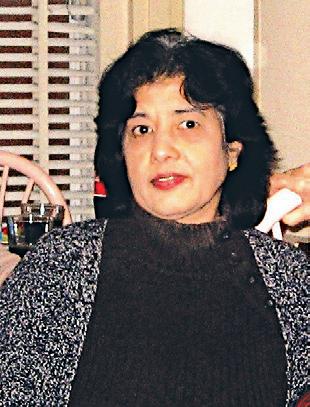
14 minute read
RAIN seniors enjoy spiritual awakening project
from 2012-07 Sydney (2)
by Indian Link
BY SUDHA NATARAJAN
RAIN seniors have had a fantastic year with a ‘Peace and Harmony’ project that has provided them with an inward journey towards realising themselves, the indwelling spirit and also opening up their minds to their fellow human beings.
This Project was funded by Hurstville City Council and Kogarah City Council for the 2011-2012 financial year, and though the project has come to a successful completion, the seniors are proceeding with their spiritual journey in varied dimensions.
So what is this ‘Peace and Harmony’ project about?
The project was started with the aim of gaining spiritual enhancement using three pathways.
Spiritual enhancement
RAIN’s spiritual enhancement through cultural expression, brings the untold and undertold folklore of Indian subcontinent communities forward, through performance art. It is a community-focused vision
The aim has been to read from ISC scriptures and legend-based folklore, and to explain their meaning, and add strength to their positive feelings through spiritual enhancement. This has been carried out with the help of our Sanskrit tutor Dr Meenakshi Karthikeyan. Starting with Bajagovindam by Aadhi Sankara, this contains a wealth of wisdom which needs to be practiced in old age when our physical frame experiences health issues and associated complaints.
Dr Meenakshi guided discussions to develop strategies for increasing individual selfworth and acceptance. Every session has been skilfully structured into repeating the verses in Sanskrit, followed by listening to the excellent and interesting explanations with anecdotes from various scripts such as Bhagawat Geetha and Ramayana. RAIN seniors have had a journey within themselves and have emerged spiritually richer.
Interaction with other faiths

Working with St George Women’s Interfaith Network (WIN), dialogue sessions with speakers of other faiths have been conducted.
During our Christmas celebration, Mrs Lurline Simpson and Mrs Lorraine Watson of the WIN group talked about Christmas and Santa Clause. Several eager questions were put forth and our seniors also ventured forth to sing Christmas carols that they learnt from their grandchildren.
Mrs Mariette Leong talked about the Baha’i faith with a Powerpoint presentation. Once again, the group showed great interest in learning about the concepts and also discussed the similarities and differences in religions.

A month later, Mrs Laila Baidun spoke about the Islamic faith and the community service concept inherent in it. RAIN seniors listened to Laila with an interest in learning about these concepts and asked several questions. This was a truly interesting dialogue session. Mrs Asha Ramzan spoke on the seva (service) aspect of Buddhism. We also visited the Helensburg Hindu and Nan Tien Buddhist temples, and the Baha’i temple during the year.
The outcomes of these interactive sessions have been:
* the fostering of cooperative and positive interaction and friendship between people of different religious and spiritual beliefs; and
* the bringing together of people from different faiths, so they can promote the concept of understanding, respect and harmony.
Our friend, Mrs Lorraine Watson of St George WIN invited a group of RAIN seniors to her home garden in an effort to promote peace and harmony, and also to raise funds for RAIN.
Cultural expression to spiritual enhancement
Many ancient cultures believed that music was an earthly manifestation of spiritual or primal vibration, also known as cosmic vibration. Primal vibration purports that there is an energy source, and music is believed to be an earthly manifestation of this energy. This pathway encouraged the seniors to practice folk and spiritual songs led by talented seniors, and two RAIN Gitanjali choir groups have emerged - in St George and Sutherland. Mrs Usha Chawla led the Hurstville team, while Mrs Kumud Pawar led the Sutherland team. The groups have successfully performed during the Hurstville Discovery festival, Diwali, Seniors Week and Rockdale Peace and Harmony festivals. The seniors have ventured forth to bring in uniformity in their green-and-gold sarees, and they continue to enjoy a positive and active life. Inspired by the ladies, the men in the group also have joined to perform.

A grand celebration titled Golden Memories – Sunheiri Yadein is being planned in which several wellknown artists will be participating. The impressive list includes Ankita Sachdev, Dr Lalita Venkatraman, Vinodkumar Rajput and his group of musicians, Aashis Shrestha, Sahiyar Garba group led by Sonal Bhatt, Vijanthi Dance group and South Indian Veena recital. The event will be held on September at the Marana Auditorium in Hurstville. This will help RAIN in fundraising for the benefit of ethno-specific Senior Care for the Indian community.
India-Pakistan break the ice on cricketing ties
The Indian cricket board recently invited Pakistan to play three One-dayers and two Twenty20 Internationals in DecemberJanuary, a move that would see the arch-rivals clashing in a bilateral series after a fiveyear gap.
The matches will be played in between England’s November-January series in India when the tourists return home for 15 days for the Christmas break, according to an agreement between the Board of Control for Cricket in India (BCCI) and the Pakistan Cricket Board (PCB).
Briefing the media after the Board’s working committee meeting in New Delhi recently, BCCI spokesman Rajiv Shukla said New Delhi, Kolkata and Chennai are the venues for the ODIs and Bangalore and Ahmedabad will host the T20 matches.

“PCB have repeatedly asked us for the resumption of ties and we have agreed to it. The public wants to see the two countries playing against each other,” Shukla told reporters.
The foreign secretaries of the two countries had discussed the revival of cricketing ties at their meeting here earlier in July.
Asked about the Indian government’s approval of the Pakistan tour, Shukla said he had already spoken to the concerned ministry officials on the matter.
“Home Minister P. Chidambaram has no objections, and neither does the ministry of external affairs. Even after the Kargil War, and the 1965 and 1971 wars, Pakistani cricket teams toured India,” he said reacting to opposition from some political parties including the Shiv Sena, who said Pakistan should not be allowed to play India as long as the Mumbai terror attack perpetrators were not brought to justice.
The series will be played when England go back home for the Christmas break after playing four Tests and two T20 matches in November-December and before they return for the five-match one-day series in January.
The two neighbouring countries last played in 2007-08 when Pakistan toured India. India was to play in Pakistan in 2009 but the tour was cancelled in the wake of the Mumbai terror attack in 2008. No international team has toured Pakistan after the attack on the Sri Lankan team bus in Lahore in 2009.
Reacting to the BCCI’s announcement, PCB chief Zaka Ashraf told the Pakistani media that it was a welcome step.
“I am glad this has come through,” Ashraf said. “Negotiations were on for quite some time and both the boards worked hard to make it happen. I had a fruitful chat with BCCI president N. Srinivasan and as we both come from a corporate background, we clearly understand the commercial aspects of an Indo-Pak series”.
Ashraf said the first step towards resuming the ties was inviting Pakistan T20 Champions Sialkot Stallions for the Champions League.
“Stallions were invited. That was the first step. Now this is a further development,” said the PCB chief.
Talking about the money matters, Shukla made it clear that the host board BCCI won’t be sharing the series’ revenue with PCB.
The announcement drew contrasting reactions from the cricket fraternity of India and Pakistan. While Pakistan’s Zaheer Abbas and Aamir Sohail expressed happiness at the news, former India captain Sunil Gavaskar questioned the timing of the series.
“My first reaction is that the free time players would have had between the England series, it is not going to be there anymore,” Gavaskar told NDTV.
“They are playing a strong side like England in November-December and now they are not going to get a breather between the Test and one-day matches. Players need the time to look after their injuries and get better,” he added.
India questions Obama views on economic reforms
The Indian government recently questioned US President Barack Obama’s perception of India’s economic reality and asserted that policy making is a “sovereign” right of the country.
“There is always a difference between perception and reality. India remains one of the most attractive destinations for foreign investors,” Commerce and Industry Minister Anand Sharma told reporters in New Delhi. “We have adopted a calibrated approach in liberalisation.”
Sharma said India’s foreign direct investment (FDI) policy regime is investorfriendly and the country had taken an array of steps to liberalise the economy and ease norms related to foreign investments.
Quoting a study conducted by the United Nations Conference on Trade and Development (UNCTAD), Sharma said in terms of attracting foreign investments, India was among the top three countries in the world.
The minister was reacting to Obama’s interview to a news agency in which he expressed concern over the deteriorating investment climate in India and called for pushing up the reform process, especially allowing overseas investments in retail.
He urged the US to “demonstrate leadership” in bringing down trade barriers and encouraging capital flows.
“The US should be taking forward the stalled Doha Development Round of the WTO to a meaningful conclusion.”
Corporate Affairs Minister Veerappa Moily said fundamentals of the economy were strong and the corporate lobbies led by the companies like Vodafone were spreading negative view of India.
“Certain international lobbies like Vodafone are spreading this kind of a story and Obama was not properly informed about the things that are happening in India,” Moily said.
Deputy Chairman of Planning Commission Montek Singh Ahluwalia, however, said many countries had voiced such concerns and the government would take these factors into account while formulating policies.
“Many countries have been expressing concern over the investment climate. We should take these factors into account,” Ahluwalia said, but there is no particular reform that would change these perceptions.
“We need to strengthen the investment climate. I don’t believe that the agenda of reform is ever coming to an end,” Ahluwalia said.
Political parties also reacted sharply and asked the government not to succumb to US pressure while taking decisions on economic reforms.
Former finance minister and senior Bharatiya Janata Party leader Yashwant Sinha said India should open up the retail sector for overseas investments as and when required and it may not be done under pressure from the US.
“If Obama wants FDI in retail and India does not want, then it won’t come just because he is demanding it,” Sinha said.
The Communist Party of India-Marxist (CPI-M) objected to the remarks by Obama that India open the doors to Wal-Mart for retail trade and other American investments in India.
“The statement is a brazen attempt to pressurize the UPA (United Progressive Alliance) government to adopt such steps as opening multi-brand retail to FDI.
“The Manmohan Singh government should not succumb to this pressure,” the party said in a statement.
‘Education City’ emerges in Chhattisgarh’s Maoist zone
It lies at the heart of the Maoist badlands in Chhattisgarh but is now set to acquire the tag of Education City with the creation of a 150-acre campus housing 15 schools and colleges that will cater to some 5,000 students from poor and tribal families. Even more remarkably, the campus at Dantewada will be run on solar power.
“Like other innovations, Education City is also a child of a need - the need for educated, skilled, trained and dedicated pool of citizenry which can not only understand the area’s needs but also fill the gap between supply and availability of skilled workforce,” said Omprakash Choudhary, the district magistrate of Dantewada who conceived the project, speaking from Raipur. Dantewada, a forested region located in the southern tip of the state, has been hitting the headlines for all the wrong reasons, most notably in April 2010 when 75 paramilitary troopers were killed in a Maoist ambush.
‘Education City’ is expected to be fully operational in 18 months. Some institutes have already opened.
What then will Education City encompass? There will be an Industrial Training Institute for 100 students, a residential school for girls with a hostel for 500, Kasturba Ashram with a hostel for 100 and Astha Gurukul with a hostel for 800. There will also be a tribal ashram and a school for 50, a residential school for boys, a model school and a security guard training institute, each with hostels for 500m a scouts and guides training Institute, a research institute for tribal children, a playground and a helipad.
Money for the project is coming from various government schemes such as the Sarva Shiksha Abhiyan and CSR (corporate social responsibility) funds of the National Mineral Development Corporation, Essar and other companies.
Not for nothing is Chhattisgarh Chief Minister Raman Singh upbeat about the project.
“Education City will not only cater to the educational needs of the vast tribal populace inhabiting Bastar, worst-hit by left-wing extremism, but also usher in an era of peace and prosperity,” Raman Singh said. Dantewada is one of the least literate districts (30.1 per cent) of the country.
Since Dantewada is a power deficit area, each block in the Education City will be separately powered with solar photo voltaic cell. The individual break-ups have not been given but as per officials of CREDA, which sells solar power equipment, each block will have Rs.60 lakh solar power set up.
The total cost of Education City is pegged at Rs. 100 crore, to be funded under various schemes of the state government and CSR funds of NMDC and Essar. It would be spread across 150 acres and will comprise 14-15 institutes. Each institute will have a separate solar system, academic building, playground, garden, hostel and other infrastructure facilities.
It is said that it will be completed in 18 months but insiders say it will take much more time and the cost will also increase.
However, the very fact that it is coming up is quite remarkable.
Indian scientists help save 131 trees in Cambodian temple
Indian scientists have been successful in conserving 131 trees at the 800-year-old Ta Prohm temple in Cambodia, better known as ‘Temple Tree’.
Experts from the Dehradun-based Forest Research Institute (FRI) along with the Archaeological Survey of India (ASI) have been working on the Conservation and Restoration of Ta Prohm Temple (Cambodia) Project under the Indian Technical and Economic Cooperation Programme (ITEC) of the external affairs ministry.
The team, which has been working there since 2007, has started seeing some good results with improvement in the health of trees which were in a bad shape, threatening the monument built in the late 12th century by Jayavarman VII of the Khmer empire in memory of his mother. The temple is a Unesco World Heritage Site.
Several movies, including the Hollywood blockbuster Tomb Raider, were shot there.
Different species of matured and young trees, some standing on the ground and some on the walls and roofs of various structures, are seen in the temple premises.
The most common tree species is Tetrameles nudiflora, locally known as ‘Speung’.
N.S.K. Harsh, head of Forest Pathology at the Forest Research Institute (FRI), said that before starting the project, they conducted a survey and found that of the 131 trees in the premises, 36 needed immediate attention.
“The trees were found under stress at the site due to heavy tourist pressure, soil compaction, injuries to exposed roots and stems, cavities in trees and exposed buttresses and basal rotting. Besides, a few trees were dangerously leaning and causing the walls and other structures to collapse under their weight,” said Harsh.
The tree height here ranges from 40 to 80 metres with huge trunks while the girth exceeds more than three metres in some cases and buttresses span up to 13 metres at the base.
The buttresses and roots are spreading all over the structures and ground, making them magnificent visual objects.
The institute’s team carried out periodic treatment of the decayed portion of trunks, stems and roots of the trees by using eco-friendly material (an oleoresin tapped from a tree) followed by cavity filling with polyurethane foam and wax.
The exposed roots of trees were covered with soil in different sections. Periodic surface treatment with anti-fungal material on etched surfaces was prescribed.
A prop was provided to support a dangerously leaning tree and was designed to withstand its swaying and weight. A metallic support was designed and erected below a wall collapsing under the weight of the tree.
“I would say timely intervention by FRI has halted further deterioration of tree health. The trees are now in a better health and their life span has increased,” Harsh said.
FRI has also carried out training classes for capacity building of local stakeholders so that they can continue the conservation work on their own post-2014 when the institute’s contract ends.
Regular monitoring of tree health is being done to check the level of decay, insect attacks, phenological behaviour and emerging tree growth pattern.
This is not the first time that India is helping Cambodia in restoration of a heritage site. Indian archaeologists had successfully restored the world famous Angkor Vat temple in the country.
In India, the FRI has conserved the famous Bodhi tree (‘pipal’) in Bodhgaya, a direct descendant of the original tree under which the Buddha meditated. It has also conserved a neem tree in the Sai Baba temple in Shirdi in Maharshtra.
Sotheby’s to celebrate 25 years of designers
Abu Jani-Sandeep Khosla
Indian contemporary fashion will be talk of London in Sep 3-5 with Sotheby’s opening an exhibition of designer wear and interior decor by celebrated designer duo Abu Jani and Sandeep Khosla.
The exhibition, “India Fantastique” will coincide with the launch of two volumes of books about the clothes created by the designers and the history of the Jani-Khosla label. The couturiers celebrate their 25th anniversary this year, Sotheby’s said recently in a statement.
Known both for their fashion creations for men and women and for interior designs, Abu Jani and Sandeep Khosla’s reputation extends far beyond India, the statement said. Many international celebrities wear Jani-Khosla creations, among them Judi Dench, Maggie Smith, Sophie Marceau and Sarah Brown.
They are stocked internationally in Harrods and Harvey Nichols in London and Bergdorf Goodman and Neiman Marcus in New York.
Together, the duo have built a 25-year-old partnership that has included designing for leading actors and actresses, working with directors on costumes for epic Bollywood films and building a brand that exudes luxury, artistry and Indian tradition.
“Abu and I thought long and hard about how we wanted to celebrate our milestone, and also about how we would use this celebration to set the vision for our creativity and ourselves in the next 25 years. It soon became clear that a book, or rather two as it turned out to be, was the ideal vehicle,” Khosla said.
The first volume of India Fantastique displays dozens of the duo’s designs while the second volume focuses on their extensive work in interior design. Their hallmark maximalism runs riot in privately commissioned interiors, which incorporate art, artifacts, antiques and vintage textiles.
Paramount in both books is the duo’s rediscovery and revivification of once moribund traditional crafts including chikan (whitework) and zardozi (gold thread embroidery), and the ways in which they make use of local artisans and reinvent their heritage by redeploying Indian antiques, the statement said.
The 600-page volumes are collectors’ items with specially commissioned photographs, Sotheby’s said.
Khosla and Jani met by chance in 1986.

Abu was born in Mumbai and started out as a costume designer in the film industry and Sandeep was born in Kapurthala (Punjab) and started out in the family leather business. The decision to work together was taken instantly and their first collection, “Mata Hari”, arrived just four months later.
Neither possessed any formal qualifications, neither had money to invest. What they did have in abundance was raw talent and an unswerving belief in their own creativity, Sotheby’s said.
“We are unabashedly Indian in our aesthetics. And passionately in love with the rich cultural, historic and design legacy of our land. Design is our way of paying homage to that beauty. By taking it into the 21st century,” Jani said.
IANS
PRACTiCe mAKeS PeRfeCT!
2012 Year 4 O.C. Final Revision Course

• DATE? Saturday 21st July 2012 AND/OR Sunday 22nd July 2012
• TIME? Morning10:30am – 1:00pm AND/OR Afternoon1:30pm – 4:00pm

• WHERE? At all participating JAC branches (NSW only) –Ring ahead for enrolments & confirmation

• WHAT? O.C. Final Revision (English, Maths & G.A) PLUS Exam Tips & Techniques.
3 + 2 Regular + Revision Courses for all Y1 - 6 students!
* History Proven System * Most Updated Materials
* Experienced Expert Teachers * High Quality Courses
At JAC, our Yr 1 – 6 students are enjoying not only 3 hours quality teaching, but also 2 hours FREE TUTORIAL REVISION classes to secure their academic success!











